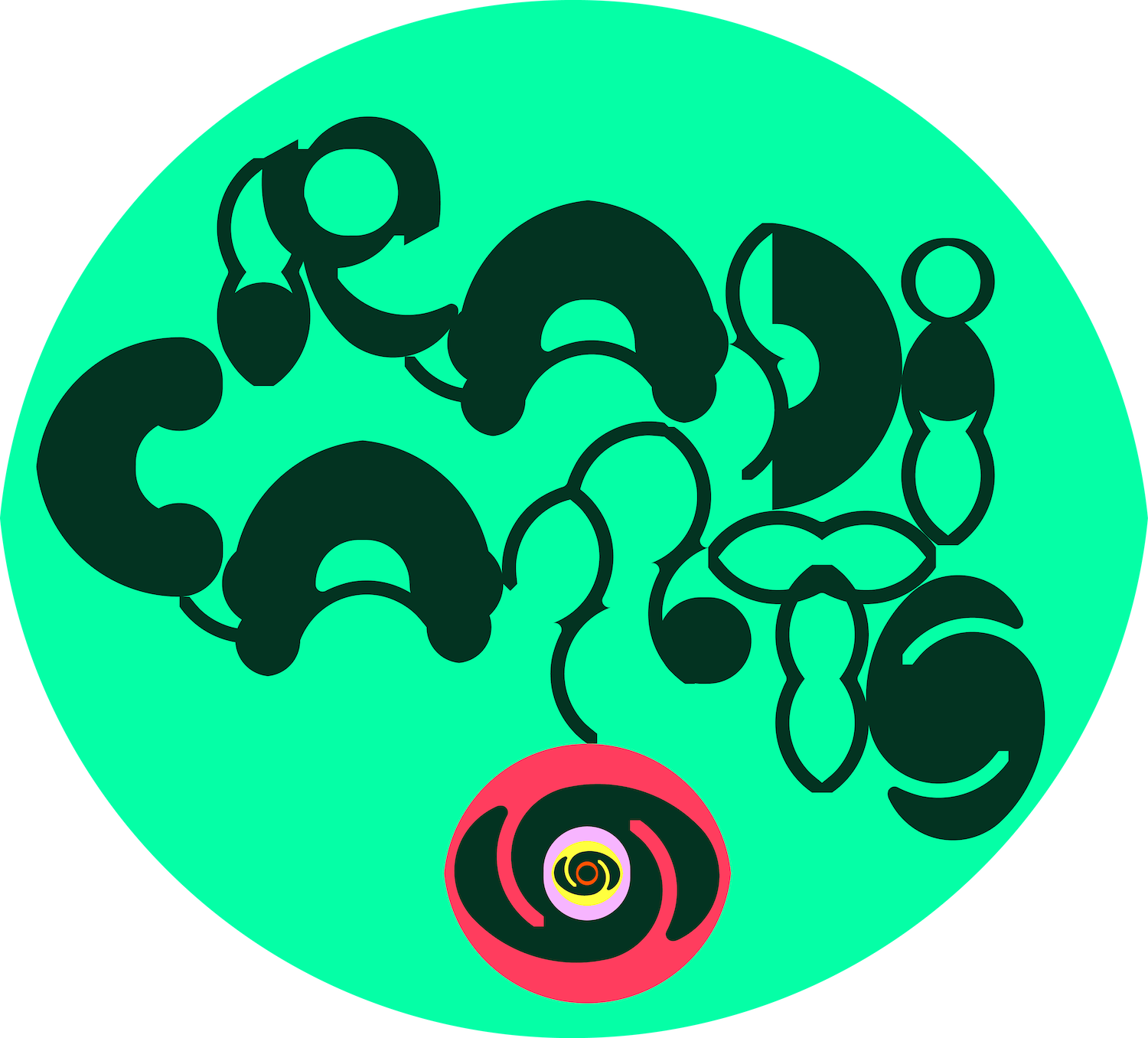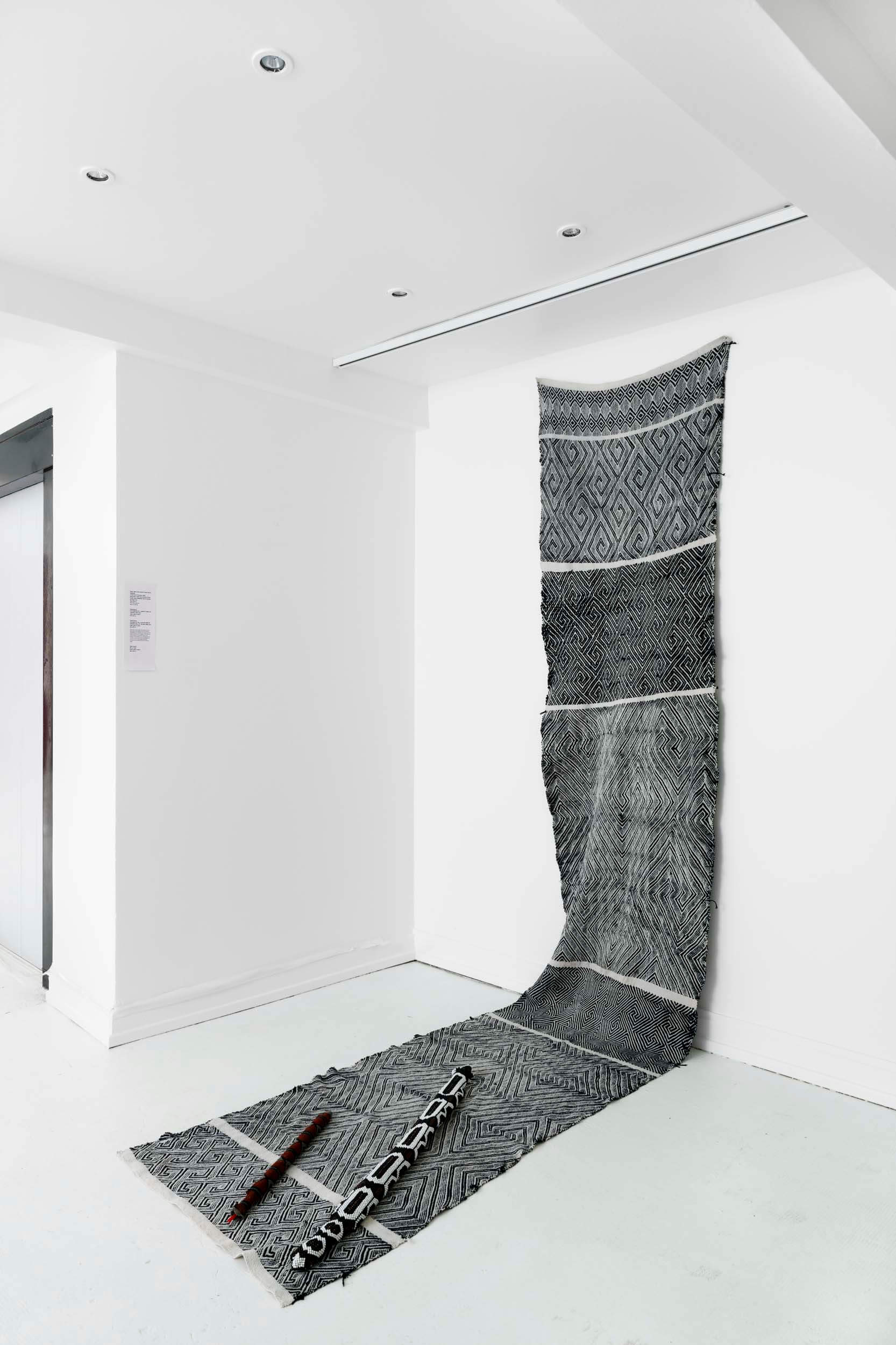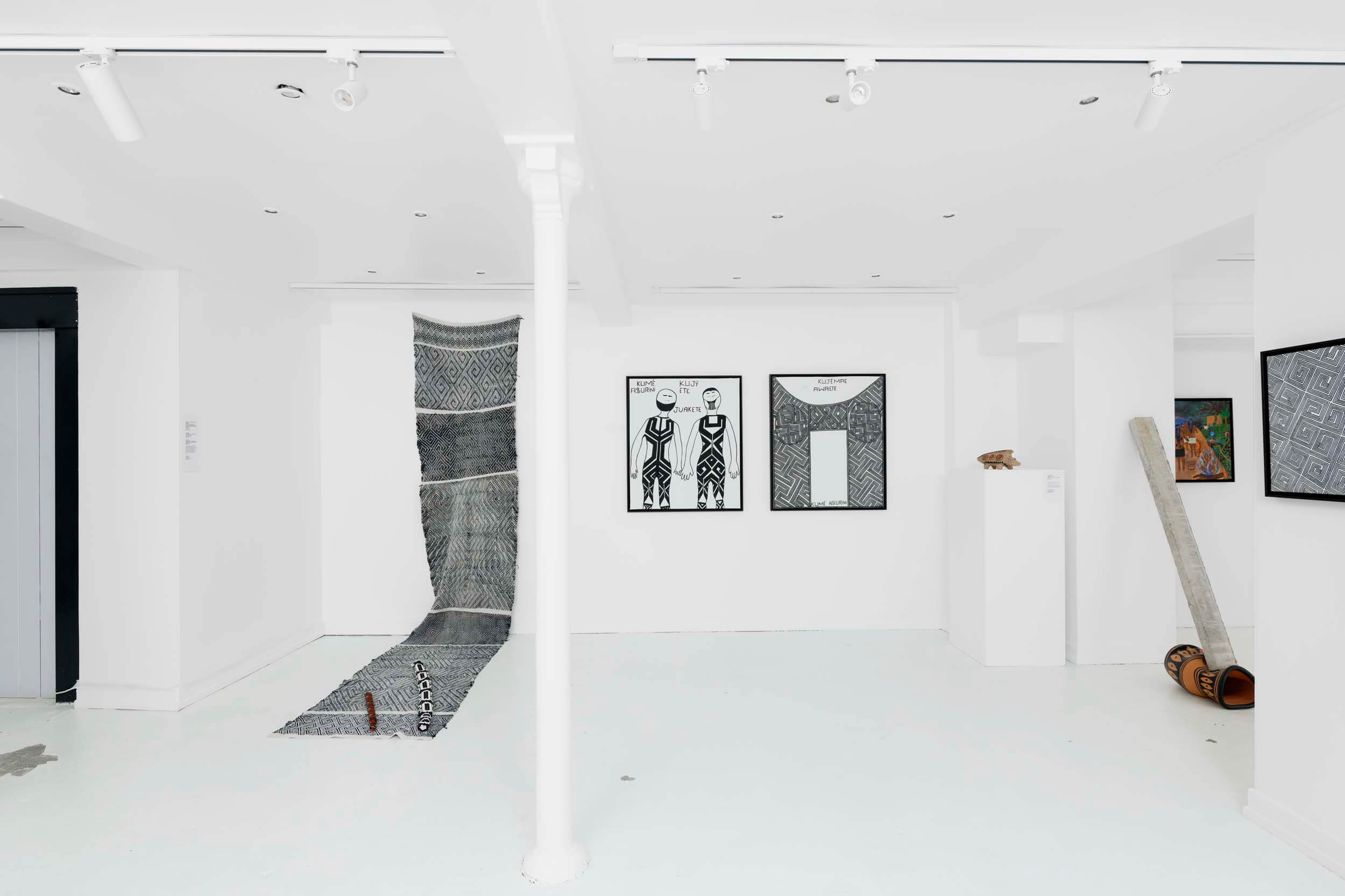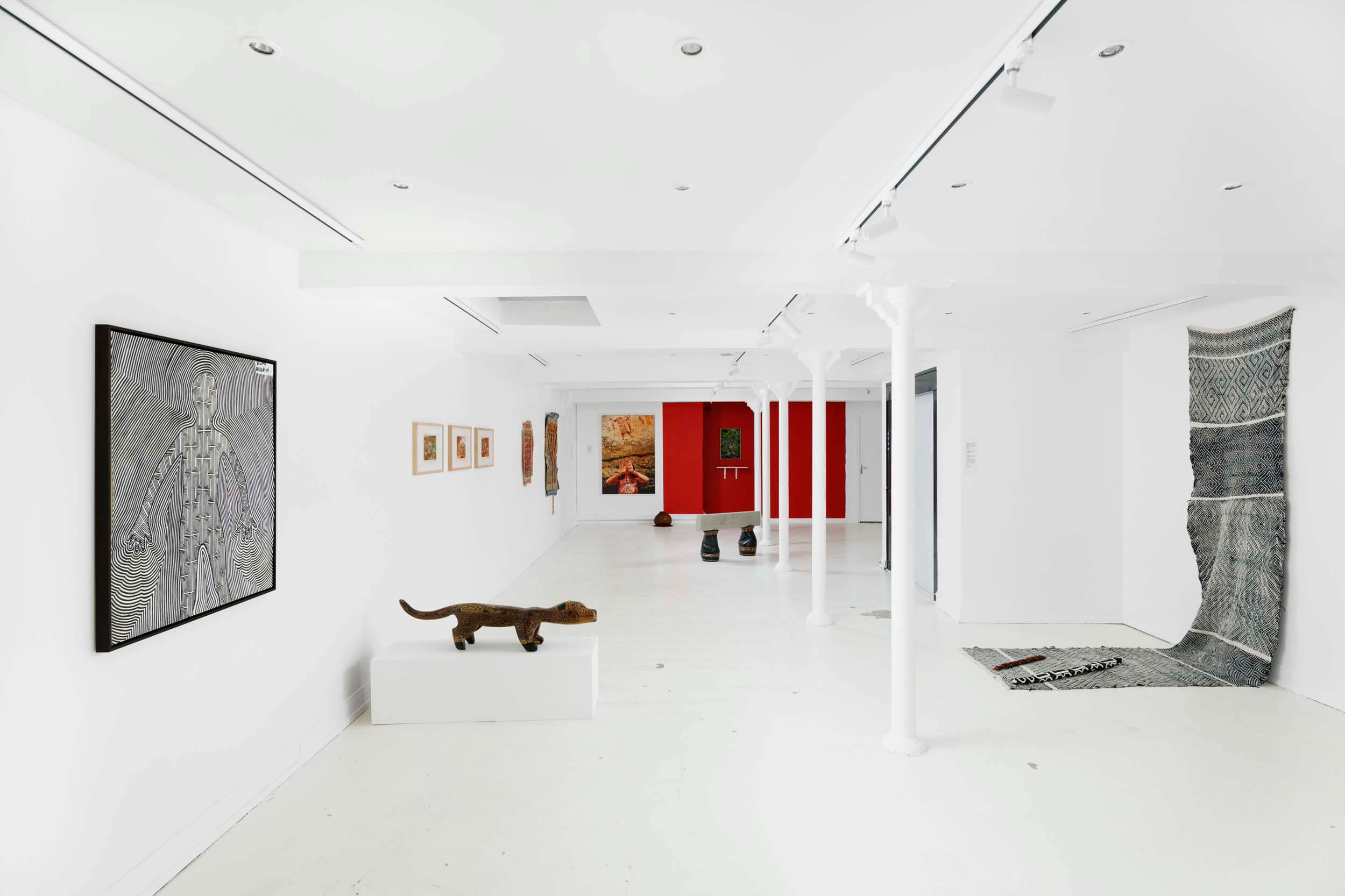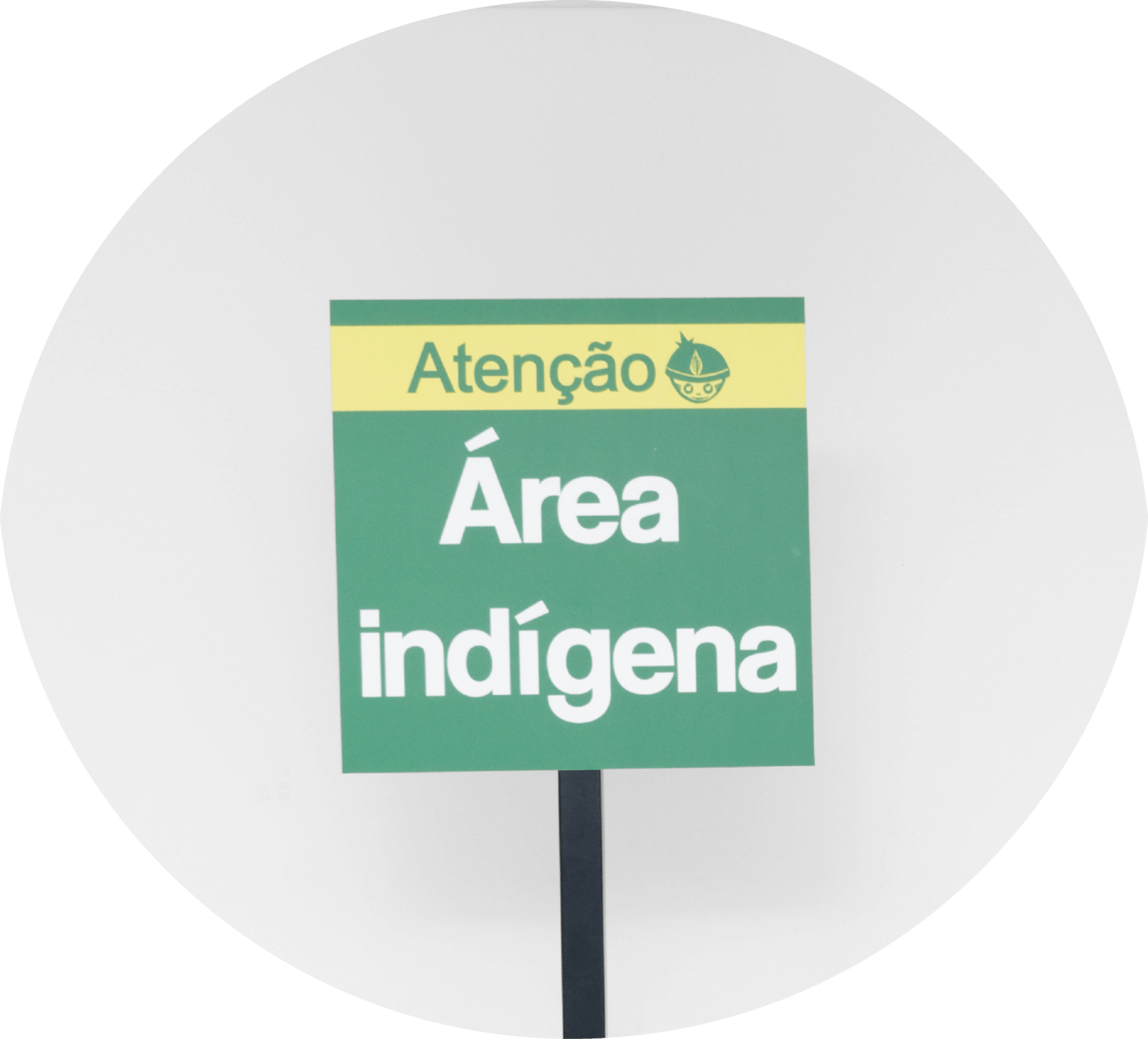Ibatsai fabric (Judite Carlos da Silva Freitas) Beaded snakes Apaminktaj collective (Bismani, Itã, Shane kene), 600 x 80 cm, 102 x 6.5 x 3.5 cm, 55 x 3 x 3.5 cm
Courtesy of the artists
Ph. Aurélien Mole
A mestra (master in the feminine) is a cloth. It is the women who are masters of this art, it is our masters who made these fabrics and who we learn to pass on to the next generations. We women learned to weave the cotton with beautiful patterns being the snake our master.
We gave the name Teacher Fabric because for us the meaning of this work is that the fabric will be stretched and people will learn from that knowledge. They will learn to read with the teacher that is the fabric and with the knowledge of the masters, the stories of my people.
The various Kenes (patterns), which are like a form of writing our ancestral stories, are represented on this cloth. In this cloth there is represented, for example, a very big tree called Sumaúma. It is the largest tree in the Amazon. The kapok tree is very big and it represents the design of narrow paths.
Another design on this fabric, teacher, is that of the black monkey’s arm, the stains of the salamander snake with parakeet eyes, the designs of narrow and wide paths, many stories are represented through these threads.
Judite Carlos da Silva Freitas, took more than a year to make this fabric. She travelled the rivers where the Huni Kuin villages are located, searching for the ancient designs in the wisdom of the elderly women and when she found a teacher, she asked her to teach her the designs that she knew. So we are very grateful for the knowledge that she left to us, her memory, her name is Ibatsai which is my same name, she left this heritage to me.
So I made this fabric to be able to teach other girls.
Ibatsai’s Biography
Before the association I started researching in several rivers in Rio Breu, Rio João, Rio Caparana and all the masters made their drawings and I asked them to draw these patterns to publish in a half square meter paper. The works on textiles are the process of many years of research with my daughter Raimunda, Raimunda travelled with me and helped me to preserve the stories of cotton, of weaving, of the Kenes (patterns). And all this process became the work presented in this exhibition, the master teacher. I started researching in 1986 to preserve the drawings of my people
(Kene) and it was a lot of work that only last year concluded this research, which resulted in around 100 preserved Kene drawings.
I believe that these drawings are identification, when you see a garment with Kene on it, that is Huni Kuin, that is Kashinawa. Face or body painting that identifies our body, our history and our way of seeing the forest.
Each drawing is a story that was born. A story that the person has learned and is passing that story on to the next generations. This comes from very far away and we are here, so let’s say that this is collective knowledge and that it should be reverted to the collective, that it took years of research, the process of registering the kenes and caring for and looking after this collective knowledge is very important.
The story of who taught them to create these designs, how weaving came about for women it is the story of how we women learned this art from the snake. The first teachers were the snakes, our people wove cotton and made white hammocks. One day the woman went down to fetch water, and when she arrived at the igapó she found a very beautiful boa constrictor that had just shed its skin. Then the woman went back to the village and the snake turned into a man.
The snake coiled itself around the woman and put its head very close to her ear and taught the woman all the secrets.
But another envious woman went and saw what was happening and told the woman’s husband that she wanted to be an artist and create a garment as beautiful as the snake.
When the woman was weaving and people came from far away wanting to learn this knowledge she rolled up the loom and put it away. But a curious woman saw it and the man stayed hidden to see her. He killed her and the snake wrapped around her body.
So it was a sad end of the women but the snake left the design for us.
So for us, to start working with cotton, we have to kill a snake. To learn all the designs there is a specific diet that has to be followed to do that job. After she has gone through this diet she already knows all the drawings.
For us it’s a spiritual relationship that exists in these fabrics.
The bead snakes were made by Rosangela and the other one by Angela, who are members of the Association of Farmers and Handicraft Producers of the Kaxinawá Women of Taruaca and Jordão.
The sale of the work of art is very important for us, because with this resource we can then organise ourselves in the towns close to where we live, we can show that we women are valued.
Judite was born in Rio Jordão, I grew up and got married and had four children, then moved to the Indigenous Land of Praia do Carapaña and had five more children. Rio Taruacá, Acre. Association founded 25 November 1999. We started with 37 women. Then men entered and there were 78 members in all. Ai 2011 we stopped and 2018 came the pandemic we stopped and 2020 we held a meeting, the immense flooding of the rivers and with the flooding we lost everything we had in our houses and association. Then in 2022 we came back again with 27 women from the village of Carapaña and 40 women from Rio Jordan. Because the water took everything we had inside the association’s house (a refrigerator, drill, motor, engine, cooler, computer, all the things we needed ran out in the flood and the association is deprived and now only has faith and women to work) we have to create everything again.
What we need, we no longer have anything to keep, we only have in our minds and memory and the person takes it and leaves nothing for anyone. We with the pandemic have lost almost all our masters, the old elders who had the knowledge of the art. Perhaps there are no longer even 5 women who have knowledge of our art and our struggle. Only the young people without knowledge are left. That is why this work of exhibiting in galleries is very important for us because it motivates us to organize ourselves again and to go forward.

